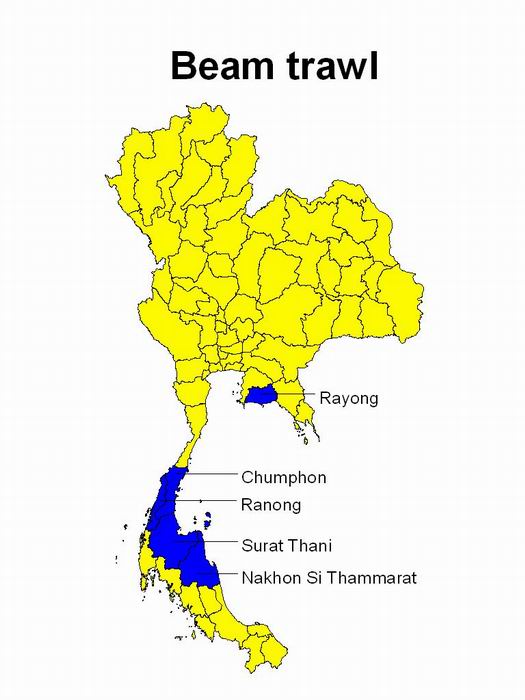Beam trawl
The
beam trawl was the forerunner of all trawl gear designs known
today. Its main feature is a beam whose purpose is
to spread the netting. Most beams are made of iron
and are between two to four meters long. Sometimes
a heavy beam is supported by steel shoes at each end which
run over the sea bed. A ground rope and a head rope
are joined together to the cement ski that works as a bobbin. The
weigh of the cement ski is about 10 to 15 kilograms for small-size
beam and about 40 to 45 kg. for big size beam trawl. The
skies are connected with the beam by a length of chain. The
towing bridle consists of two or three ropes, one from each
shoe and one from the center of the beam. These come
together and are shackled directly to the towing warp. The
principal catch of beam trawl are shrimps, therefore the
mesh size is relatively small. The mesh size of beam
trawl also depends on the catch.
Setting:
On arrival at the fishing ground, the beam trawls are hoisted
on the booms which are then swung out. The same method
is used for recovery. The operation is undertaken while
the fishing boat sail on a straight course.
Hauling:
When hauling, the net is heaved in until it is at the boom
tips. The cod-end is taken by the line attached to
the cod-end strap, and the catch is emptied out directly.
Fishing
grounds of beam trawl are in shallow waters with muddy bottom. This
kind of fishing is very common in the south of Thailand such
as Nakhon Sri Thammarat, Surat Thani, Chumporn. Fishing goes
on throughout the year.

|